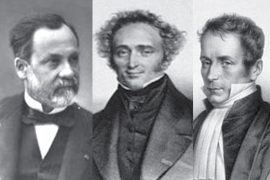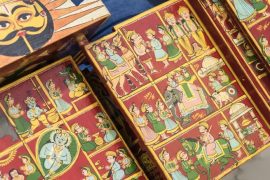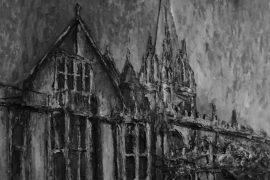The Cartier Toussaint is a necklace featured in the most successful Ocean’s franchise—Ocean’s 8. The iconic necklace, worn by Daphne Kluger (played by Anne Hathaway), was the target of Debbie Ocean’s (played by Sandra Bullock) heist.
However, did you know the iconic necklace has a connection to the Maharaja of Nawanagar, Ranjitsinhji, in India? The necklace—named after Jeanne Toussaint, Cartier’s former creative director—was inspired by a necklace commissioned by the Maharaja in 1931.
Jacques Cartier was one of the three sons of Alfred Cartier, the man who started the Cartier jewellery empire. He was in charge of the London jewellery business. Cartier soon found recognition as the Royal Jeweller of King Edward VII and was known as ‘The Jeweller of Kings and King of Jewellers.’
In 1911, Jaques Cartier travelled to the Royal Durbar of Delhi, hoping to find clients. Jacques Cartier was stunned at the sight of jewellery fashioned by Indian princes. Many of India’s royals—such as Maharaja of Baroda, Nawanagar, Kapurthala, Nizam, Jodhpur, Patiala, and Jaipur—commissioned Jacques Cartier to make timeless pieces.
The Maharaja of Nawanagar, Ranjitsinh, lived in Britain before he took over the throne. In England, he was known for his cricketing genius; he led a flamboyant life—and often lived beyond his means—by borrowing money, a habit which got him into legal trouble.
However, after a long power struggle, Ranjitsinh ascended the throne of Nawanagar. Like other royals, Ranjitsinh showed great interest in jewels and jewellery. A connoisseur and collector of gemstones and jewellery, he had a magnificent collection of statement pieces. He inherited some jewellery from his ancestors, and Jacques Cartier had planned and completed others during his lifetime.
Cartier and Ranjitsingh developed a friendship that resulted in a magnificent piece that inspired the Jeanne Toussaint necklace of the Ocean’s 8. ‘Jacques had sold him an emerald necklace. Jacques and Ranji became good friends, and the two decided to create some exquisite jewellery, particularly a diamond necklace,’ said Francesca Cartier Brickell, author of The Cartiers: The Untold Story of the Family Behind the Jewelry Empire and the great-granddaughter of Jacques Cartier.
Jacques Cartier travelled the globe looking for the best diamonds, both white and coloured, of the highest quality. He would present them to Ranjisingh, who would then check with other specialists before approving Cartier’s purchase of the items on the market.
Ranjisingh once invited Albert Monnickendam, a gem and jewellery appraisal specialist, to his vast estate in Ireland. He led him into an enormous chamber and presented him with a massive jewellery box, which opened to display the stunning 136.25-carat blue diamond known as the ‘Queen of Holland.’
Albert was captivated by the sight of a stone of the highest grade and colour. The Maharaja inquired about the value of this gem. Following an assessment, Albert valued it at 250,000 pounds sterling, equivalent to several hundred crores today.
Ranjisingh decided to use the precious stone as a centrepiece of statement jewellery. He commissioned Cartier to design it. The two kept hunting for more diamonds to go around the pendant and complement the Queen of Holland.
They found diamonds of various colours and hues, which created an overall effect of ‘a cascade of coloured diamonds.’
When the necklace was ready in 1931, Cartier called it ‘his best ever creation’ as he believed that purchasing such gemstones at any price or any point in history to result in such a necklace was almost impossible.
Unfortunately, Ranjisingh could not fashion Cartier’s labour of love for long. Two years after the creation of Cartier’s necklace, the Maharaja passed away from heart failure, and Cartier never got to see him wear it again.
Jacques Cartier’s masterpiece did not receive the same limelight as the Patiala jewels. It was not because the latter surpassed the iconic Cartier jewellery’s beauty; the Maharaja protected it from the public eye. Ranjitsinhji ‘did not like the idea of displaying it as the Patiala necklace was displayed in the Paris exhibition,’ said Francesca. For him, ‘this necklace was born out of love for gemstones.’
Digvijaysingh, Ranjisingh’s nephew and successor, is shown wearing the necklace in many images. However, the necklace soon went away from the royal family of Nawanagar. In 1960, Cartier purchased the Queen of Holland from the Maharajah’s family and transported it to their London division. Thirty years later, it was reportedly sold for $7,000,000; at the time, Robert Mouawad possessed the Queen of Holland.
Over eight decades after Jacques Cartier’s ‘really superb realisation of a connoisseur’s dream,’ the Cartier design team went deep into the archives to create the Jeanne Toussaint necklace. In only eight weeks, they recreated the masterpiece just for the film using original designs and images.
Since the original necklace was designed for a man, the scale had to be reduced to fit Anne Hathaway. As a prop for the film, the diamonds were reproduced using zirconium oxide, a natural substance embedded in white gold. The necklace does not exist in its original form now.
-30-
Copyright©Madras Courier, All Rights Reserved. You may share using our article tools. Please don't cut articles from madrascourier.com and redistribute by email, post to the web, mobile phone or social media.Please send in your feed back and comments to editor@madrascourier.com











